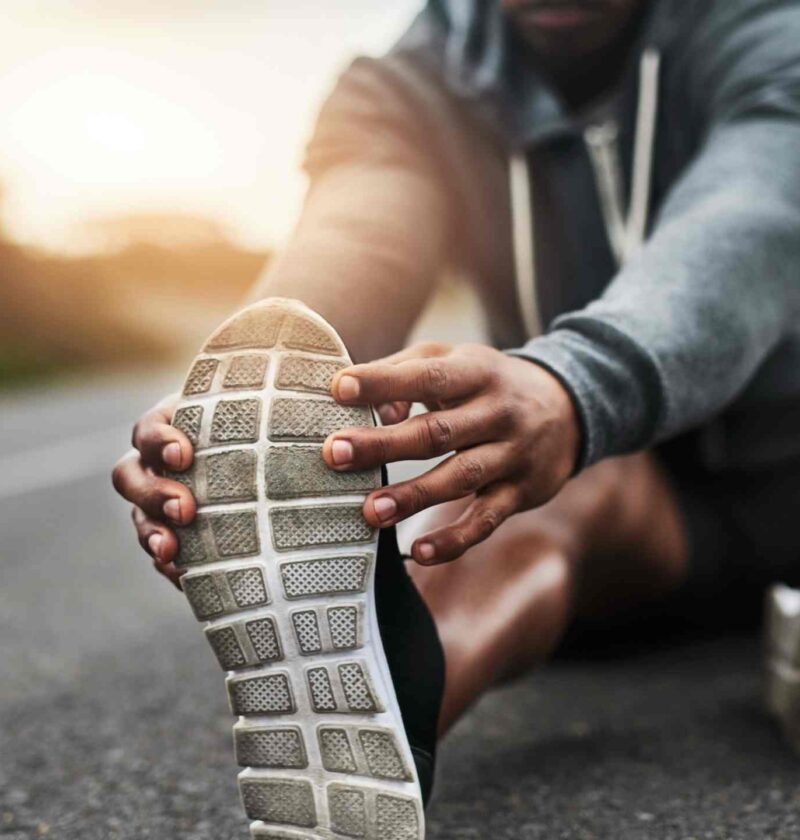Struggling with post-workout soreness and slow muscle recovery? You’re not alone. Digital technology leads the way with wearable tech, mobile exercise apps topping the list of 2025 fitness trends, but the fundamentals of muscle recovery remain rooted in proven science.
Whether you’re a weekend warrior or a dedicated athlete, proper recovery is essential for muscle growth, strength gains, and injury prevention. These 10 evidence-based muscle recovery tips will help you bounce back faster and stronger from every workout.
Why Muscle Recovery Matters More Than You Think
During exercise, your muscle fibers experience microscopic damage – this is completely normal and necessary for growth. However, without proper recovery strategies, this damage can accumulate, leading to decreased performance, increased injury risk, and frustrated fitness goals.
Research suggests that consuming roughly 1.6 grams (g) of protein per kilogram (kg) of body weight per day is enough to maximize muscle growth. But protein intake is just one piece of the recovery puzzle.
1. Prioritize High-Quality Protein Intake
The Science: Protein provides the building blocks (amino acids) your muscles need for repair and growth.
Action Steps:
- Consume 20-40g of high-quality protein within 2 hours post-workout
- The ISSN recommends eating high quality protein within the first 2 hours after working out to stimulate the building blocks for new muscle tissue
- Focus on complete proteins: chicken breast, fish, eggs, Greek yogurt, whey protein
Pro Tip: Combine protein with carbohydrates for optimal recovery – try chocolate milk, Greek yogurt with berries, or a protein smoothie with banana.
2. Master Your Hydration Strategy
The Science: Even mild dehydration can significantly impair muscle recovery and performance.
Action Steps:
- Drink 16-24 oz of water for every pound lost during exercise
- Include electrolytes (sodium, potassium, magnesium) in post-workout drinks
- Monitor urine color – aim for pale yellow
Recovery Boost: Add a pinch of sea salt and lemon to your water for natural electrolyte replacement.
3. Embrace Anti-Inflammatory Foods
The Science: Adding particular foods and drinks to your diet, including tart cherry juice, fatty fish, watermelon, and whey protein, may speed muscle recovery and reduce exercise-related soreness.
Top Anti-Inflammatory Foods:
- Tart cherry juice: Natural source of melatonin and antioxidants
- Fatty fish: Omega-3s reduce exercise-induced inflammation
- Turmeric: Powerful anti-inflammatory compound curcumin
- Blueberries: Anthocyanins help reduce muscle damage
Easy Recipe: Post-workout smoothie with tart cherry juice, Greek yogurt, blueberries, and a pinch of turmeric.
4. Optimize Your Sleep for Maximum Recovery
The Science: Growth hormone release peaks during deep sleep phases, making quality sleep crucial for muscle repair.
Sleep Optimization Tips:
- Aim for 7-9 hours of quality sleep nightly
- Keep bedroom cool (65-68°F) and dark
- Avoid screens 1 hour before bedtime
- Consider magnesium supplementation for deeper sleep
Recovery Hack: Try a warm Epsom salt bath before bed – the magnesium helps relax muscles and improve sleep quality.
5. Time Your Carbohydrate Intake Strategically
The Science: Focus on carbohydrates for energy and glycogen restoration, adequate-protein for repair and muscle protein synthesis after training.
Carb Timing Strategy:
- Consume 1-1.2g carbs per kg body weight within 30 minutes post-workout
- Choose fast-digesting carbs immediately after training (banana, dates, white rice)
- Switch to complex carbs for sustained energy (sweet potato, quinoa, oats)
6. Incorporate Active Recovery Days
The Science: Complete rest isn’t always optimal – light movement promotes blood flow and nutrient delivery to recovering muscles.
Active Recovery Ideas:
- 20-30 minute walks
- Gentle yoga or stretching
- Swimming at easy pace
- Foam rolling session
Weekly Structure: Plan 1-2 active recovery days between intense training sessions.
7. Use Temperature Therapy Strategically
The Science: Alternating hot and cold exposure can reduce inflammation and improve circulation.
Temperature Protocols:
- Ice baths: 10-15 minutes at 50-59°F immediately post-workout
- Contrast showers: Alternate 30 seconds cold, 30 seconds hot, repeat 3-4 times
- Sauna: 15-20 minutes at 160-200°F, 2-3 hours post-workout
Budget-Friendly Option: Cold shower for 2-3 minutes followed by normal temperature water.
8. Consider Strategic Supplementation
The Science: While whole foods should be prioritized, certain supplements can enhance recovery when used appropriately.
Evidence-Based Supplements:
- Creatine: 3-5g daily for improved power and recovery
- Magnesium: 300-400mg before bed for muscle relaxation
- Vitamin D: Especially important for athletes training indoors
- Omega-3s: 1-2g daily if not consuming fatty fish regularly
Important Note: Always consult with a healthcare provider before starting new supplements.
9. Practice Stress Management Techniques
The Science: Chronic stress elevates cortisol levels, which can impair muscle recovery and protein synthesis.
Stress-Busting Strategies:
- Meditation or deep breathing exercises (10-15 minutes daily)
- Regular massage or self-massage with foam roller
- Spending time in nature
- Maintaining work-life balance
Quick Technique: Try 4-7-8 breathing: Inhale for 4, hold for 7, exhale for 8.
10. Listen to Your Body’s Recovery Signals
The Science: Overtraining can actually reverse progress and increase injury risk.
Recovery Indicators to Monitor:
- Heart rate variability (HRV) using fitness wearables
- Sleep quality and duration
- Energy levels throughout the day
- Motivation for training
- Muscle soreness duration
Red Flags: Persistent fatigue, declining performance, frequent illness, or mood changes may indicate inadequate recovery.
Creating Your Personal Recovery Protocol
The most effective recovery strategy combines multiple approaches tailored to your individual needs, training intensity, and lifestyle. Start by implementing 2-3 of these tips and gradually add more as they become habitual.
Sample Post-Workout Recovery Timeline:
Immediately (0-30 minutes):
- Consume protein + carbs (3:1 or 4:1 ratio)
- Begin rehydration with electrolytes
30 minutes – 2 hours:
- Gentle stretching or foam rolling
- Cool shower or contrast therapy
2-4 hours post-workout:
- Balanced meal with anti-inflammatory foods
- Begin relaxation techniques
Evening:
- Epsom salt bath
- Optimize sleep environment
- Avoid stimulants
The Bottom Line on Muscle Recovery
Effective muscle recovery isn’t about finding one magic solution – it’s about consistently applying evidence-based strategies that support your body’s natural healing processes. The trends shaping 2025 reflect a continued evolution toward inclusivity, personalization and holistic health, and recovery is no exception.
Start with the fundamentals: adequate protein, proper hydration, quality sleep, and stress management. As these become second nature, add advanced techniques like temperature therapy and strategic supplementation.
Remember, recovery is when the real magic happens – it’s during these rest periods that your muscles actually grow stronger. Invest in your recovery as seriously as you invest in your workouts, and watch your fitness results accelerate.
Frequently Asked Questions
Q: How long should muscle recovery take? A: Minor muscle soreness typically resolves within 24-48 hours. Severe soreness lasting more than 72 hours may indicate inadequate recovery or overtraining.
Q: Is it better to take complete rest days or active recovery days? A: For most people, 1-2 active recovery days per week work better than complete rest, as light movement promotes blood flow and nutrient delivery.
Q: Can I speed up muscle recovery with supplements? A: While supplements can help, they should complement, not replace, proper nutrition, sleep, and stress management. Focus on fundamentals first.
Q: How do I know if I’m recovering properly? A: Monitor sleep quality, energy levels, workout performance, and use wearables to track metrics like heart rate variability.
Ready to take your fitness to the next level? Try our high-protein Greek chicken bowl recipe – the perfect post-workout meal loaded with recovery-boosting nutrients. Your muscles will thank you!







